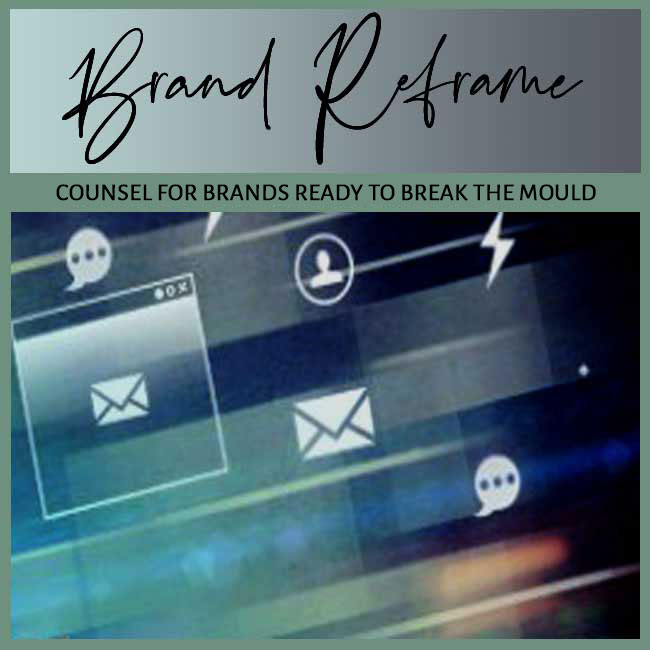
FOCUS: BRAND LAUNCH FAILURE | AUDIENCE: INVESTORS IN SLUGGISH BRANDS
BY: SHOBHA PONNAPPA | BRAND BREAKTHROUGH STRATEGIST | 45 YEARS | 125+ CLIENTS
I answer 6 tough questions about why overexplaining your brand can confuse buyers, dilute positioning, and sabotage early traction.
Founders often believe that more detail means more clarity. So they overfill websites, pitch decks, and packaging with all the reasons to buy. But buyers don’t want everything … they want a signal. When your message tries to cover every base, it often covers nothing. In this post, I tackle the questions I hear when brands overtalk, overjustify, and undercut their own impact.
Because they’re trying to prove legitimacy. Especially after fundraising, there’s pressure to showcase depth, tech, and differentiation. But when everything is a highlight, nothing stands out. The message feels bloated, not bold.
Overexplaining is usually fear-based. It comes from anxiety that buyers won’t “get it.” But strong brands trust the audience to lean in. They simplify boldly, not apologetically. And they choose memorability over technicality when it matters most.
It dilutes sharpness. Every extra claim, feature, or explanation takes attention away from the core. When buyers feel overwhelmed, they disengage. Worse, it creates doubt: “If you have to explain this much, is it really working?”
Buyers want to feel clarity within seconds. A brand that tries to prove too much often ends up proving nothing. Overexplaining creates friction, not conviction. It makes a brand look like it’s still convincing itself.
Look at your homepage or elevator pitch. If it reads like a brochure or whitepaper, it’s likely overloaded. If someone can’t repeat your brand’s core promise in one sentence, you’ve said too much. Simplicity doesn’t mean vague … it means focused.
Early-stage brands often confuse completeness with clarity. But clarity means making one idea unforgettable, not ten ideas equally visible. Simplicity is a strategy, not a shortcut.
Yes. Investors look for focused thinking and scalable clarity. If your deck or site is filled with walls of text and layered explanations, it signals uncertainty. Precision shows you know what matters most. And focus reassures them you know how to grow.
I’ve had investors admit they passed on brands because they “talked too much and said too little.” Brevity doesn’t mean a lack of depth … it signals confidence and control. It earns trust without needing to plead.
Not if you anchor to the right message. Simplifying doesn’t mean dumbing down. It means prioritising what drives belief and decision-making. You can always layer more later … but start with what earns attention.
A great message is a doorway, not a manual. If your opener is clear and magnetic, people will ask for more. It invites engagement, builds curiosity, and creates space for layered storytelling at the right time.
Start with your strategic sharpness. What is the core value you want to be remembered for? What does your buyer need to feel in the first five seconds? If you’re not sure, you’re likely saying too much without strategic intent.
Then strip everything else away. Refine. Prioritise. Test short-form narrative over data dump. Let one strong sentence become the hook. Then build the story around that anchor. And iterate until every word earns its place.
If these questions hit home, it may be time to tighten your message, not expand it. Simplicity is not a reduction — it’s a reveal. One crisp idea delivered with conviction can cut through far louder than a paragraph. The brands that rise fastest don’t speak in essays.
If you’re brand owner or manager seeking stronger brand performance, this FAQ Insight Post I wrote could interest you: “FAQs: Why Brand Drift Often Gets Blamed on Algorithm Changes.“
And if you’re a solo expert looking to sharpen traction, this FAQ Insight Post I worked on may resonate: “FAQs: The Strategic Flaw in Leading Your Brand With Logic.“

"One BIG IDEA can turn brand stagnation into unstoppable movement. Spots are limited each week ... book your breakthrough session now."
Shobha Ponnappa
More Breakthrough Ideas … Case Studies & FAQs … from the Brand Launch Failure Category
Case Studies
FAQ Insights
Smart insights, real-world frameworks, and idea-driven clarity – designed to help brands move.
Get my fortnightly Brand Reframe newsletter. Smart insights, distilled thinking, and focused momentum to help your brand lead.

Get my free AI strategy guide. Smart prompts, sharper briefs, and practical ways to make AI support your brand momentum.

Just fill in the form to join. Get my newsletter and the guide shown alongside, all with several game-changing tips.